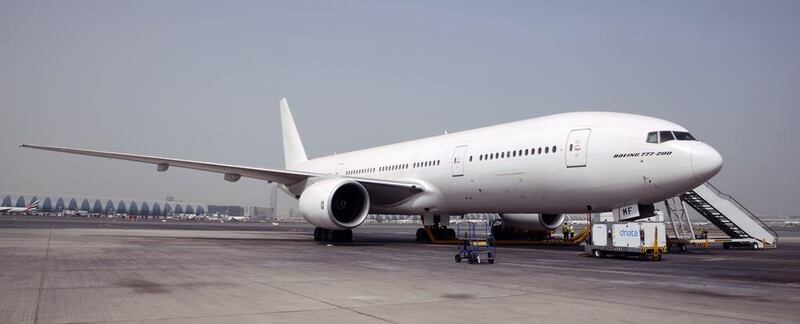Emirates has phased out the Boeing 777-200 from its fleet with the final aircraft now resting at the so-called aircraft graveyard in Arizona.
The aircraft delivered in 1996 clocked up 60 million kilometres, enough to fly to the moon and back nearly 80 times, Emirates said.
The move to retire the 777-200 is part of Emirates’ strategy to maintain a relatively young fleet, which has an average age of just over six years. The savings made to the bottom line by operating new fuel-efficient aircraft comes as an added bonus.
The Dubai airline's fleet of 234 aircraft is entirely made up of wide-body aircraft, including Airbus A380 and Boeing 777. With 24 new aircraft entering operations in 2014-15 and another 26 new aircraft to come this year, Emirates has to retire older aircraft.
Another 10 aircraft are due to be retired this year.
“So far, in 2014 and 2015 we have phased out three B777-200s and eight A340-500s on schedule, which is no mean feat in itself. For the year 2015-16, we’re planning a total of 10 phase-outs,” said Philip Audsley, the manager of aircraft assets at Emirates.
When it comes to aircraft retirement, Emirates either returns the aircraft to its lessor, sells it, or sends it to an aircraft graveyard, where the planes get dismantled.
On a physical level, the aircraft goes through a “de-branding” process, which means Emirates would remove its logo and livery.
Aircraft re-sale, however, is not an easy process. It could be difficult to find a second buyer, according to analysts.
"Emirates is known to get excellent value out of their aircraft. They work them long and hard. That can make it challenging to find a second owner," said Will Horton, a senior analyst at the Centre for Aviation (Capa).
Saj Ahmad, the chief analyst at StrategicAero Research, agreed.
“Older aircraft aren’t easy to sell,” he said. “Even in this low fuel price environment. Sometimes the sum of their parts is greater, so that’s why they are retired and then stripped.”
selgazzar@thenational.ae
Follow The National's Business section on Twitter





